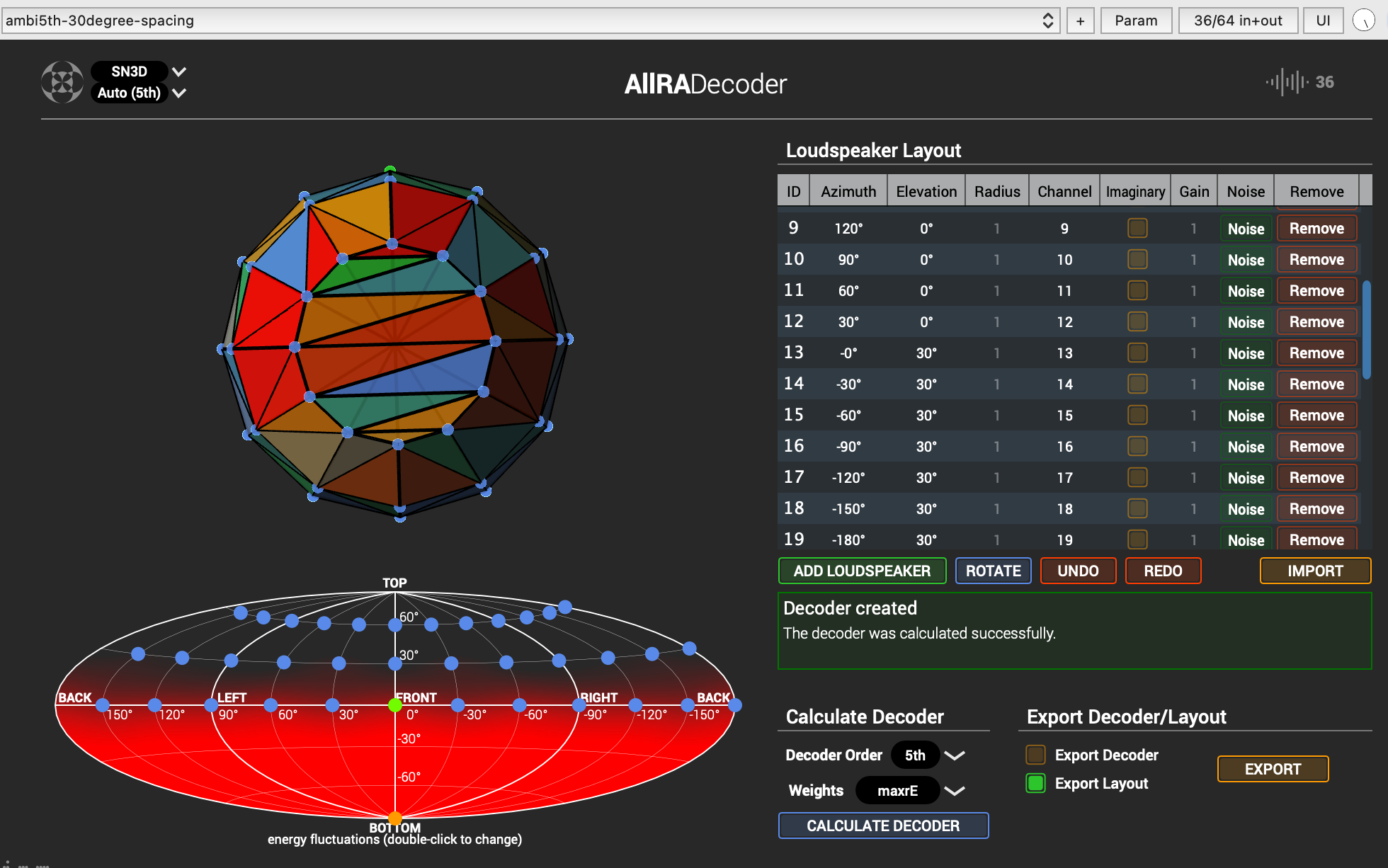Mixing and composing in ambisonics is great. Translation from one speaker system to another is fairly painless and you can’t argue with the price of the basic tools (free) and the potential for long-term archiving and restoration of mixes. One of the issues we face though is how to generate stereo masters from, say, a 5th order ambisonics render.
I’ve been experimenting with this again and, coincidentally, Theo Voerste asked me about this too just recently. Here’s his question and a slightly modified version of my answer, translated from our German exchange into English:
TV: What did you suggest for stereo decoding? I would like to work with 5th-Order. So far I’ve only ever used 3rd-Order and then the O3A stereo decoder from Blue Ripple Sound. If I understand correctly, the UHJ encoders only work with 1st order. You actually recommended UHJ, didn’t you?
ME: Yes, the ambisonic toolkit’s UHJ is 1st order (and all others too, I presume), but for a stereo render it’s arguable that that’s all you need and that 3rd vs 4th vs 5th etc. is a bit irrelevant in this case. For instance, bear in mind that, for example, the first 16 channels of a 5th order signal are all the channels of a 3rd order signal and higher orders are mainly intended for more precision in a dome. [Further comments redacted so as not to influence the tests below.]
To make a fair comparison, I’ve made several different renders of a section of my current composition, composed in 5th-order ambisonics. The example is from the middle of this currently 68-minute piece, and has really different sonic structures within its 4:06 duration. It also has sounds from all around and above the listener (but generally not below).
All are rendered as dithered 24-bit 48KHz wave files from a 36-channel 5th-order buss, with four different ambisonics-to-stereo plugins: the O3A stereo decoder in panner (as opposed to basic head) mode, the Sparta and IEM binaural decoders, and the UHJ (sometimes called ‘super stereo‘) plugin from the Ambisonics Toolkit.
The two SAD renders are quite different. These use the Spatial Audio Designer plugins that have nothing to do with ambisonics at all. But as rendering stereo signals from ambisonics always seems a little suboptimal, I thought I’d throw this into the mix. The SAD renders involve decoding the 5th order ambisonics signal for speaker placements at what might be called ‘ideal’ locations of 30 degree offsets in a ring from 12 o’clock, or actually in three such rings at 0 (ground level), 30, and 60 degree elevations, i.e. 12 speakers in each ring:
As the target in all cases would be to render something that works on both speakers and headphones, or at least one that works on speakers and another aimed at headphones, I made a ‘straight’ SAD render that doesn’t use the binauralisation of SAD’s mix plugin, and one that uses a binaural room simulation (Lunar Studio 2) that seemed right for this kind of music.
I adjusted levels manually at first to hit the same peaks but then after rendering I normalised to automatically hit target integrated loudness levels of -14 LUFS (yes, that hot). The adjustments necessary to achieve this are detailed in decibels after the filename below:
- lusted-fleeting-demo8-sad-stereo.wav: -1db
- lusted-fleeting-demo8-sad-binaural-luna-studio2.wav: -2.5db
- lusted-fleeting-demo8-uhj.wav: -1.1db
- lusted-fleeting-demo8-sparta-ambi-bin.wav: -0.2db
- lusted-fleeting-demo8-o3a-panner.wav: -0.8
- lusted-fleeting-demo8-iem-binaural.wav: 0.0db (!)
- lusted-fleeting-demo8-mid-side.wav: -0.9
Bear in mind that the mid-side render is not something that most people would use. It involves treating the first two channels of the 5th-order ambisonics signal as merely the mid and side channels of a two-channel virtual mid-side recording (omni plus figure-of-eight mics). This is theoretically acceptable I suppose but arguably a lot goes amiss via this method. It’s still quite useful though, to at least get an idea of the space via a quick-and-dirty (computationally cheap) decode. I’d be really interested to hear what people think and/or prefer in the comments.


Leave a Reply